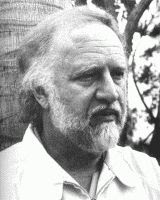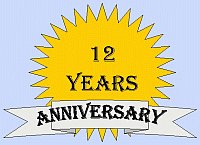Richard Matheson, I am Legend and its movie adaptations
by Steven Williams
 Richard Matheson is the author of the novel I am Legend, on which the 2007 film of the same name is loosely based. The book has been used to produce four films, three for theatrical release (The Last Man on Earth, 1964; The Omega Man, 1971; I am Legend 2007) and one straight to DVD release (I am Omega, 2007). While the straight to DVD release is not particularly important, the three theatrical releases, the difference between them, and their differences from the author's original novel make for some interesting discussion of book to film adaptations. Matheson was born in New Jersey in 1926, the son of Norwegian immigrants. In 1949 he received an bachelor's degree in journalism from the University of Missouri. In 1951 he moved to California where he married in 1952. The couple had four children, coincidently three of them going on to become writers themselves.
Richard Matheson is the author of the novel I am Legend, on which the 2007 film of the same name is loosely based. The book has been used to produce four films, three for theatrical release (The Last Man on Earth, 1964; The Omega Man, 1971; I am Legend 2007) and one straight to DVD release (I am Omega, 2007). While the straight to DVD release is not particularly important, the three theatrical releases, the difference between them, and their differences from the author's original novel make for some interesting discussion of book to film adaptations. Matheson was born in New Jersey in 1926, the son of Norwegian immigrants. In 1949 he received an bachelor's degree in journalism from the University of Missouri. In 1951 he moved to California where he married in 1952. The couple had four children, coincidently three of them going on to become writers themselves.
 Matheson's professional writing career began in 1950 with the publication of Born of Man and Woman, appearing in the Magazine of Fantasy and Science Fiction. This early work presaged his writing style, which came to be associated with a blend of science fiction, horror, and fantasy. Surprising for the darkness of some of the stories and books he wrote, Matheson also has a reputation for writing 'zany' humor based on overblown versions of familiar popular genres. He has also successfully written westerns as well as locked room and noir mystery fiction.
Matheson's professional writing career began in 1950 with the publication of Born of Man and Woman, appearing in the Magazine of Fantasy and Science Fiction. This early work presaged his writing style, which came to be associated with a blend of science fiction, horror, and fantasy. Surprising for the darkness of some of the stories and books he wrote, Matheson also has a reputation for writing 'zany' humor based on overblown versions of familiar popular genres. He has also successfully written westerns as well as locked room and noir mystery fiction.
 In addition to fiction, Matheson also achieved professional success as a writer of screenplays for both television and film. Some of the best known of these include Nightmare at 20,000 Feet, one of several for The Twilight Zone series, the feature film Duel (1971), Steven Spielberg's first film and based on one of Matheson's own short stories, and the teleplay for one of the two TV movies for The Night Stalker series. This Night Stalker screenplay earned Matheson an Edgar Award from the Mystery Writers of America. He also wrote the screenplay for the film The Incredible Shrinking Man (1957) based on his novel The Shrinking Man. Other of his works that have been made into films include What Dreams May Come (1998), Stir of Echoes (1999), Bid Time Return which was released as the film Somewhere in Time (1980), Hell House released as the film titled The Legend of Hell House (1973), and Trilogy of Terror (1975).
In addition to fiction, Matheson also achieved professional success as a writer of screenplays for both television and film. Some of the best known of these include Nightmare at 20,000 Feet, one of several for The Twilight Zone series, the feature film Duel (1971), Steven Spielberg's first film and based on one of Matheson's own short stories, and the teleplay for one of the two TV movies for The Night Stalker series. This Night Stalker screenplay earned Matheson an Edgar Award from the Mystery Writers of America. He also wrote the screenplay for the film The Incredible Shrinking Man (1957) based on his novel The Shrinking Man. Other of his works that have been made into films include What Dreams May Come (1998), Stir of Echoes (1999), Bid Time Return which was released as the film Somewhere in Time (1980), Hell House released as the film titled The Legend of Hell House (1973), and Trilogy of Terror (1975).

 Matheson's style of infusing traditionally supernatural fiction with a scientific perspective, a sort of science fiction horror fiction, is especially evident in his short novel I am Legend. This book blends elements of vampire fiction with apocalyptic science fiction. The setting for the novel is 1976 through 1979 and there is a new disease, apparently created in the environmental turmoil that has resulted from the aftermath of a brief nuclear war. This new disease has killed most of the surviving humans on the earth. The main character has experienced the collapse of society as the disease progressed, suffering through the deaths of his little girl and eventually his wife.
Matheson's style of infusing traditionally supernatural fiction with a scientific perspective, a sort of science fiction horror fiction, is especially evident in his short novel I am Legend. This book blends elements of vampire fiction with apocalyptic science fiction. The setting for the novel is 1976 through 1979 and there is a new disease, apparently created in the environmental turmoil that has resulted from the aftermath of a brief nuclear war. This new disease has killed most of the surviving humans on the earth. The main character has experienced the collapse of society as the disease progressed, suffering through the deaths of his little girl and eventually his wife.
To his horror, it turns out that that he is one of only a very few who are completely immune to the disease and that it does not kill everyone, at least not in the way being dead was in the past. Instead, the disease animates the dead giving them a need for blood but leaving them with only a significantly reduced intelligence as well an extreme sensitivity to sunlight. The zombies fall into a sort of lethargic stupor during the day and in general, the infection's symptoms mimic the legends about vampires. It turns out though that not everyone who has caught the disease is actually dead.  There are also apparently disease victims who linger as infecteds but who have not been killed outright. The disease effects make them also very sensitive to UV light and daylight induces in them the same stuporous sleep. They even have a craving for blood though it is not mindless like the animated dead. The few normal humans who were immune became prey for the vampire-like animated dead. Fortunately for the book's main character, since the animated dead are weakened and their intelligence is reduced their threat is not impossible for the main character to resist.
There are also apparently disease victims who linger as infecteds but who have not been killed outright. The disease effects make them also very sensitive to UV light and daylight induces in them the same stuporous sleep. They even have a craving for blood though it is not mindless like the animated dead. The few normal humans who were immune became prey for the vampire-like animated dead. Fortunately for the book's main character, since the animated dead are weakened and their intelligence is reduced their threat is not impossible for the main character to resist.
 The main character spends his days in an almost mindless routine of hunting down and killing these apparently 'living dead' and fortifying his home. He spends his nights enduring crude, ineffective attacks by the animated dead on his house. As it appears more and more likely that he is the only human left alive, he happens upon a stray dog wandering around in his neighborhood. He puts a lot of effort into luring the justifiably wary dog into coming to him and for a time has the hopes of having a companion. Unfortunately the dog also succumbs to the disease. The main character sinks into a deeper despair but continues his macabre ritual of daylight hunting of the seeming vampires, gathering supplies, crude scientific investigation of the disease, and fortifying his home. He continues to spend his nights repelling their attacks.
The main character spends his days in an almost mindless routine of hunting down and killing these apparently 'living dead' and fortifying his home. He spends his nights enduring crude, ineffective attacks by the animated dead on his house. As it appears more and more likely that he is the only human left alive, he happens upon a stray dog wandering around in his neighborhood. He puts a lot of effort into luring the justifiably wary dog into coming to him and for a time has the hopes of having a companion. Unfortunately the dog also succumbs to the disease. The main character sinks into a deeper despair but continues his macabre ritual of daylight hunting of the seeming vampires, gathering supplies, crude scientific investigation of the disease, and fortifying his home. He continues to spend his nights repelling their attacks.
Not long after the death of the dog, he spots what appears to be a normal woman. It turns out that she is one of a group of infected but still living survivors who have discovered a way to control the disease enough that they are trying to rebuild civilization. Since the infected living must still avoid the sun and sleep during the day, the main character's daytime hunts to kill the vampiric animated dead have also involved the killing of infected survivors.  The infected survivors plan to kill off the remaining animated 'vampire' dead themselves and then begin the work of rebuilding. Unfortunately, they see this last surviving normal, 'legendary' human simply as a murderous monster, something much different from them who has been hunting and killing them while they slept. The woman is actually a decoy, sent by the surviving infected to somehow get into his house and figure out a way to capture and stop him. In the end, he is able to convince her that he is not actually a monster. The other infected survivors are still terrified of him though and cannot see him as anything other than a threat. In the end they execute him in a public ceremony, and in his death his very existence becomes a 'legend', just like vampires once were.
The infected survivors plan to kill off the remaining animated 'vampire' dead themselves and then begin the work of rebuilding. Unfortunately, they see this last surviving normal, 'legendary' human simply as a murderous monster, something much different from them who has been hunting and killing them while they slept. The woman is actually a decoy, sent by the surviving infected to somehow get into his house and figure out a way to capture and stop him. In the end, he is able to convince her that he is not actually a monster. The other infected survivors are still terrified of him though and cannot see him as anything other than a threat. In the end they execute him in a public ceremony, and in his death his very existence becomes a 'legend', just like vampires once were.
 As mentioned previously in this article, four film versions of Richard Matheson's novel I am Legend have been made. I am Omega is a straight to DVD low quality, poorly realized production released to take advantage of the publicity surrounding the theatrical release of I am Legend starring Will Smith. I am Legend is a well-done film that varies from the plot of the book but does a good job of covering some of the same ideas in the book and while updating it and making it accessible to a contemporary audience. Since the film has only recently been released, it is inappropriate to discuss the plot in any detail.
As mentioned previously in this article, four film versions of Richard Matheson's novel I am Legend have been made. I am Omega is a straight to DVD low quality, poorly realized production released to take advantage of the publicity surrounding the theatrical release of I am Legend starring Will Smith. I am Legend is a well-done film that varies from the plot of the book but does a good job of covering some of the same ideas in the book and while updating it and making it accessible to a contemporary audience. Since the film has only recently been released, it is inappropriate to discuss the plot in any detail.  As an aside though, some related apocalyptical films with similar perspectives on what it might be like to be the last surviving human and that are worth seeing are The World, the Flesh and the Devil (1959) starring Harry Belafonte, Inger Stevens, and Mel Ferrer as well as The Quiet Earth (1985) starring Bruno Lawrence, Alison Routledge, and Pete Smith.
As an aside though, some related apocalyptical films with similar perspectives on what it might be like to be the last surviving human and that are worth seeing are The World, the Flesh and the Devil (1959) starring Harry Belafonte, Inger Stevens, and Mel Ferrer as well as The Quiet Earth (1985) starring Bruno Lawrence, Alison Routledge, and Pete Smith.
 In 1971, the best known of the two earlier film adaptations of Matheson's I am Legend was released as The Omega Man starring Charlton Heston. This film version shares some of the late 1960s and early 1970s feel of Charlton Heston's, other high profile science fiction films of the period Planet of the Apes and Soylent Green. The Omega Man with Charlton Heston almost completely removes any references to vampirism that were in the novel, except for the primary symptom of the disease, the infected survivor's sensitivity to sunlight. In this version, the disease is the result of biological warfare between the People's Republic of China and the Soviet Union. Like the novel, the film uses flashback to show how the disease wiped out the human beings.
In 1971, the best known of the two earlier film adaptations of Matheson's I am Legend was released as The Omega Man starring Charlton Heston. This film version shares some of the late 1960s and early 1970s feel of Charlton Heston's, other high profile science fiction films of the period Planet of the Apes and Soylent Green. The Omega Man with Charlton Heston almost completely removes any references to vampirism that were in the novel, except for the primary symptom of the disease, the infected survivor's sensitivity to sunlight. In this version, the disease is the result of biological warfare between the People's Republic of China and the Soviet Union. Like the novel, the film uses flashback to show how the disease wiped out the human beings.
 Charlton Heston's character is a military scientist who injected himself with an experimental vaccine, which apparently worked and made him immune. The timeline still has the setting as being in the late 1970s, but in this film version the trauma suffered during society's collapse and the vampire-like transformations have made the surviving infecteds susceptible to a group psychosis and they have formed into a group that calls itself 'The Family' (shades of Charles Manson) which sees civilization itself as the cause of their plight. They espouse all technology, mimic aspects of medieval life (including the wearing of black robes), and strive to destroy Heston's character as a sort of heretical residual representative of technological civilization. Like the novel, Heston's character spends his days scavenging supplies, fortifying his house against attacks by 'The Family', and looking for the daytime nest 'The Family' uses so that he can destroy them and end the threat they represent.
Charlton Heston's character is a military scientist who injected himself with an experimental vaccine, which apparently worked and made him immune. The timeline still has the setting as being in the late 1970s, but in this film version the trauma suffered during society's collapse and the vampire-like transformations have made the surviving infecteds susceptible to a group psychosis and they have formed into a group that calls itself 'The Family' (shades of Charles Manson) which sees civilization itself as the cause of their plight. They espouse all technology, mimic aspects of medieval life (including the wearing of black robes), and strive to destroy Heston's character as a sort of heretical residual representative of technological civilization. Like the novel, Heston's character spends his days scavenging supplies, fortifying his house against attacks by 'The Family', and looking for the daytime nest 'The Family' uses so that he can destroy them and end the threat they represent.

Despite his best efforts, eventually 'The Family' succeeds in capturing Heston. They declare him a heretic and prepare to burn him at the stake but he at the last moment he is rescued by a group of what appear to be normal survivors. It turns out that the young apparently do catch the plague but do not become severely ill with it and express its odd symptoms of sunlight sensitivity and growing psychosis until they hit puberty.  One of the members of this group is a young woman with whom Heston begins a relationship. Heston decides that since these young people have some resistance already, it might be practical try to give them a long-term resistance to the disease by giving them a serum made from his own blood. A test batch of the serum is tried out on one of the young people, the brother of the woman he is now involved with, and the young man ends up becoming completely immune. In a fit of idealism, he approaches 'The Family' to try to convince them to accept the serum also. Instead of listening to the young man, they kill him. In the mean time, the young woman succumbs to the more serious symptoms of the disease and joins 'The Family'. She uses what she knows to help 'The Family' capture Heston. He escapes but is mortally wounded in the process. In the end, the group of young survivors leave the city with a flask of Heston's blood serum that he has given them, implying that they will be able to use it insure their own immunity and begin the process of rebuilding civilization.
One of the members of this group is a young woman with whom Heston begins a relationship. Heston decides that since these young people have some resistance already, it might be practical try to give them a long-term resistance to the disease by giving them a serum made from his own blood. A test batch of the serum is tried out on one of the young people, the brother of the woman he is now involved with, and the young man ends up becoming completely immune. In a fit of idealism, he approaches 'The Family' to try to convince them to accept the serum also. Instead of listening to the young man, they kill him. In the mean time, the young woman succumbs to the more serious symptoms of the disease and joins 'The Family'. She uses what she knows to help 'The Family' capture Heston. He escapes but is mortally wounded in the process. In the end, the group of young survivors leave the city with a flask of Heston's blood serum that he has given them, implying that they will be able to use it insure their own immunity and begin the process of rebuilding civilization.
 Though The Omega Man was a relatively effective film version of Matheson's novel, it was The Last Man on Earth in 1964 that is in many ways closest to Matheson's novel. It is interesting to note that though Matheson wrote the screenplay for this first film adaptation he was sufficiently displeased with later rewrites and rewrites during filming that he asked that his name no appear in the credits. Because of this, Matheson is not mentioned in the film credits and instead the film screenplay writer attributed to Logan Swanson. This film is an Italian-made fairly low budget adaptation starring Vincent Price.
Though The Omega Man was a relatively effective film version of Matheson's novel, it was The Last Man on Earth in 1964 that is in many ways closest to Matheson's novel. It is interesting to note that though Matheson wrote the screenplay for this first film adaptation he was sufficiently displeased with later rewrites and rewrites during filming that he asked that his name no appear in the credits. Because of this, Matheson is not mentioned in the film credits and instead the film screenplay writer attributed to Logan Swanson. This film is an Italian-made fairly low budget adaptation starring Vincent Price.
The setting is 1968 and the main character lives in a day-to-day grind of vampire hunting, gathering supplies, and fortifying his home. At nights, he endures the relatively ineffective attacks of vampires on his home.  As a survivor, Price's character is a fairly ordinary man. Through flashbacks his experience of the dissolution of society is described, including the deaths of his daughter and wife. Significantly, he daughter died first and so the still-functioning government was able to enforce the cremation of her corpse. Unfortunately, when his wife dies, things have decayed to the point that he is able to bury his wife in his yard. To his horror, she returns as one of the animated dead and he must destroy her corpse. This first film adaptation of Matheson's novel focuses on Price's efforts to understand the disease. This adaptation follows more closely the book's efforts at explaining the disease, relating it to traditional vampire stories.
As a survivor, Price's character is a fairly ordinary man. Through flashbacks his experience of the dissolution of society is described, including the deaths of his daughter and wife. Significantly, he daughter died first and so the still-functioning government was able to enforce the cremation of her corpse. Unfortunately, when his wife dies, things have decayed to the point that he is able to bury his wife in his yard. To his horror, she returns as one of the animated dead and he must destroy her corpse. This first film adaptation of Matheson's novel focuses on Price's efforts to understand the disease. This adaptation follows more closely the book's efforts at explaining the disease, relating it to traditional vampire stories.
 The movie also follows the book in having a dog appear as another apparent survivor and Price captures the wary dog, treats its wounds, and starts to think he will have a companion again. Unfortunately, the dog also succumbs to the disease. Price settles back into his daily routine but not much later, he spots a woman who runs from him. He is uncertain at first if she is infected or not. She seems to be able to stand sunlight but is repelled by garlic. The question is settled when he surprises the woman while she is attempting to inject herself with something. It turns out that the liquid is a combination of blood and vaccine that surviving infecteds have developed as a way to limit with but not destroy the disease. The injections allow them to function normally but they must take it regularly
The movie also follows the book in having a dog appear as another apparent survivor and Price captures the wary dog, treats its wounds, and starts to think he will have a companion again. Unfortunately, the dog also succumbs to the disease. Price settles back into his daily routine but not much later, he spots a woman who runs from him. He is uncertain at first if she is infected or not. She seems to be able to stand sunlight but is repelled by garlic. The question is settled when he surprises the woman while she is attempting to inject herself with something. It turns out that the liquid is a combination of blood and vaccine that surviving infecteds have developed as a way to limit with but not destroy the disease. The injections allow them to function normally but they must take it regularly  or else the virus takes over their systems and turns them into vampire-like living dead. The infecteds are planning to destroy the remaining animated dead and rebuild society.
or else the virus takes over their systems and turns them into vampire-like living dead. The infecteds are planning to destroy the remaining animated dead and rebuild society.
Price is feared by the infecteds because he has been, unknown to himself, killing off both vampires and infected living. The infecteds see him as a sort of super-human threat, a sort of legendary creature. After hearing this story, Price picks a time when the woman is asleep and injects some of is own blood into her. This cures her completely. Unfortunately, now that the woman has infiltrated Price's home, the infecteds stage an organized attack on the house. He is able to get away but is wounded in the process. In the end, despite the cured woman's attempts to mediate, Price is killed by the infecteds, dramatically, by being impaled on a church altar.
I am Legend is still worth reading and all three of the movie adaptations of I am Legend are worth seeing: I am Legend, Omega Man, and The Last Man on Earth. I am Legend, the film, is both hopeful and realistic about the trauma of personal loss. Omega Man fits well into Heston's trilogy of period science fiction classics (with Planet of the Apes and Soylent Green). The Last Man on Earth, despite its low budget, gives the reality the psychological costs of survival that apocalyptical events would probably actually induce. I think it is important to note that both the The Last Man on Earth and I am Legend films spend much of their story-telling time exploring the psychological costs for a lone survivor.
In its ongoing influences, The Last Man on Earth is notable for its effect on George Romero's work. He has acknowledged that his initial ideas were drawn from Matheson's book. The two resulting films, The Last Man on Earth and Night of the Living Dead, have spawned a sub-genre of science-based horror movies based as sequels or films with very closely related story lines. The most notable recent film in this sub-genre has been 28 Days Later. Notably 28 Days Later features murderous, angry undead/infecteds. It is likely that the transformation of undead zombies from shambling, low-intelligence threats into monstrous, extremely dangerous predatory creatures reflects the ongoing need to purge modern anxieties about the perceived levels of threat felt from day to day.

Home
Older Article: Spring Fava Beans, Roman Style

Richard Matheson, I am Legend and its movie adaptations by Steven Williams is licensed under a Creative Commons Attribution-Noncommercial-No Derivative Works 3.0 United States License.
Permissions beyond the scope of this license may be available by contacting Steven Williams through Bookmarc's BookmarcsOnline.











